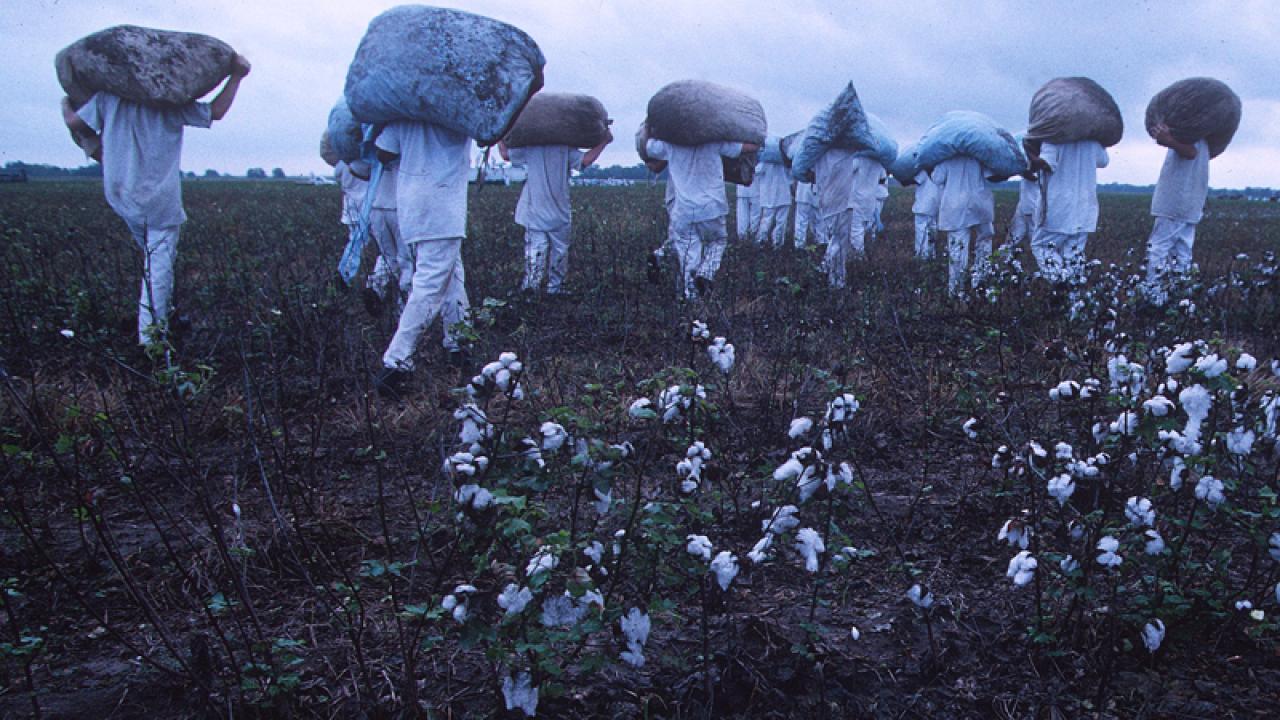The poet and the jailer: breaking up the American prison system
Neither a simple scholarly book nor a real literary experience, Jackie Wang’s book Prison capitalism, to be published by Semiotext(e) in February, confronts mass incarceration in the United States by looking at the processes that fuel and maintain the prison system: anti-black racism, predatory loans, algorithmic policing, privatized prisons, scams to credit, data analysis and exclusion stories. His argument is incisive, but it is also beautifully written; he glides between subjects with conceptual agility and stylistic flair, tying the stories together without confusing them. In this way, Wang is able to construct a complex portrait of systemic violence while avoiding overwhelming paranoia. The result is a book that oscillates between dark but lucid analyzes and, at times, surprising moments of hope.
Today, Wang argues, supposedly “racial-neutral” technologies (credit reporting, data mining, law enforcement software) justify and perpetuate long-standing racist policies, giving them a veneer of legitimacy. scientist. Moreover, these falsely objective technocratic practices are a means of rationalizing expropriation: states, cities and municipalities try to solve their budgetary dilemmas by extracting money from the inhabitants – in the form of fines – and by building their local economies around police and prisons (while budgets for infrastructure and services are reduced). Along with an ideology that presents the calculus as disinterested and impartial, these policies are buffered by dominant discourses that frame poverty and incarceration as matters of personal responsibility. The burden of recurrent capitalist crises is thus recast in moral and rational terms and shifted onto the shoulders of the poor:
“Having a bad credit score is seen as a moral failing rather than just an index of structural inequality…I argue that the risk is a new colorblind racism, as it enshrines already existing social and economic inequalities under the guise of l opportunity… Moreover, risk scoring is a practice that divides the population into categories of deserving and unworthy.’
While this analysis goes far in examining the social logics that support mass incarceration, Wang pushes the argument further; she continually directs her research in new directions. Through parallel discussions of credit scores, which not only record a person’s economic history but are believed to anticipate future behavior, and algorithmic policing, which predicts future crimes based on location of past crimes, resulting in increased surveillance of certain areas, Prison capitalism shows how technocracy is not merely analytical, but predictive: crime and poverty are self-fulfilling prophecies of capitalist rationality.
Wang argues incisively that debt (personal, corporate, and governmental) structures contemporary inequality. Debt also appears as neutral accounting, but functions as a means of extraction. Wang writes, “As we observe the economic life of the United States, we see that at every historical moment debt has been racialized. As a recent example, she points to the disproportionate targeting of black and Latino borrowers for subprime loans. The United States is built on a history of racial exclusion, but the debt is an illustration of how the country now also operates through what Wang calls “expropriation through financial inclusion.” This embeds racism in economic policy. When inequality is organized as a convoluted set of financial mechanisms, it is difficult to fight. It is even difficult to see, for those who do not experience it directly:
“The violent foundation of white freedom and security in the United States often goes unnoticed by those who live in relative safety because their lives are mediated in a way that has made that violence invisible or, when visible, can be considered legitimate and not be recorded as violence (such as violence by the police and prisons).’

The invisibility of violence allows white Americans to imagine themselves innocent and to understand crime and punishment as matters of individual morality. Wang stages this idea from a variety of formally incongruous angles, from rigorous explanations of financial processes to free-wheeling experiments: there’s a chapter telling the story of his brother’s incarceration, a script for a performance on Robocop, and a chapter that pastes quotes from radicals and abolitionists. And the book ends with a poem.
After recapping a book about expropriation and death, it may seem crude to discuss aesthetics, but the form of the book is part of its argument – it is not possible to see systemic violence from a perspective objective view, it must be examined through a series of partial points of view. Some of these views are factual and historical, some are abstract and theoretical, and some are opaque and experimental. But perhaps most importantly, the formal variation is a rejection of paranoia: Wang elucidates a system, but it is also affirmative of writing, dreaming, and possibility, which are cracks in that system. In the last chapter, she quotes the Palestinian poet Mahmoud Darwish on the freedom of the prisoner to dream and the reduction of the guard to “useless eavesdropping”. Wang replies: “The profession of poet makes you dream. The jailer’s job is to contain. The poet is the one who sheds light. The guard is the one who takes it.


Comments are closed.